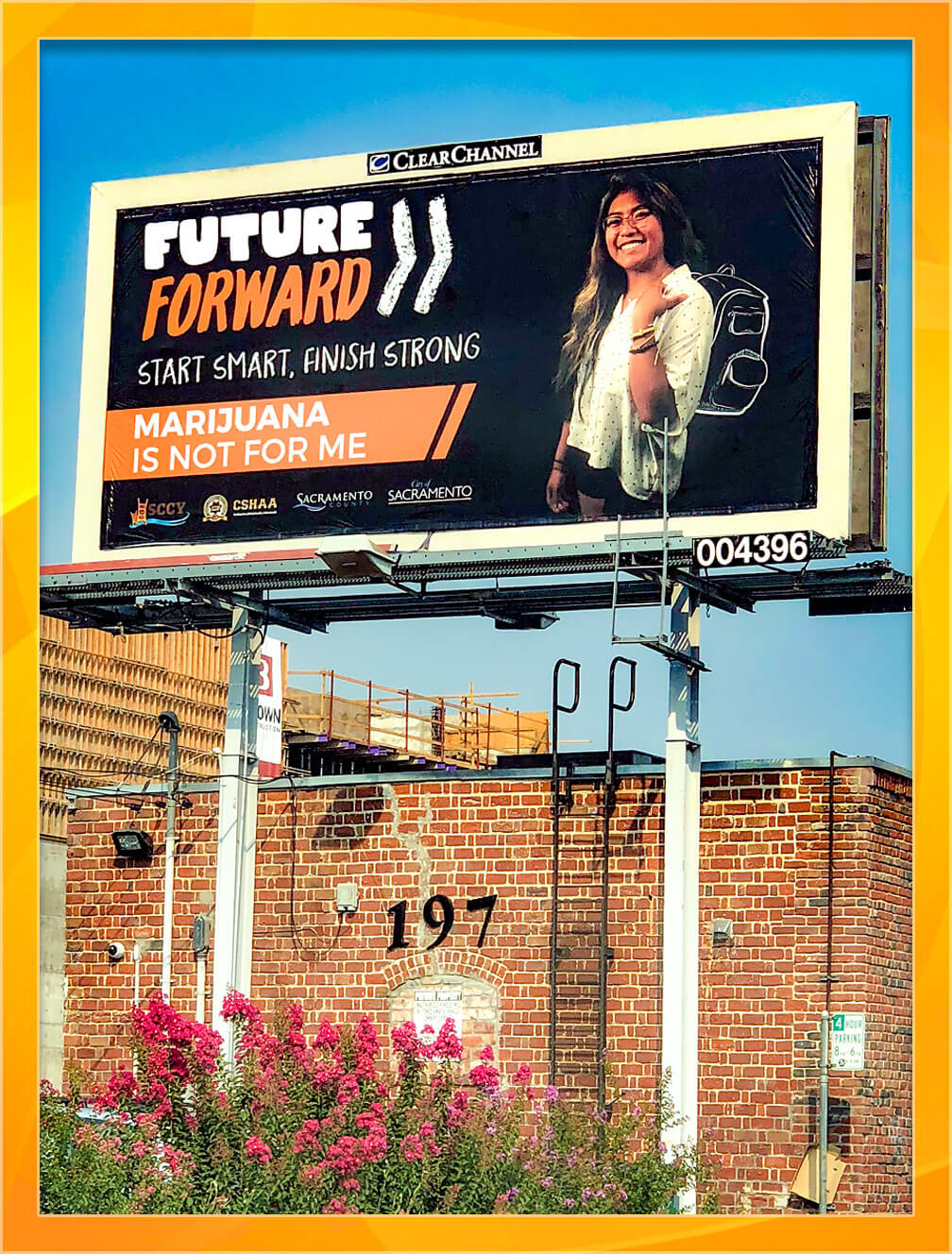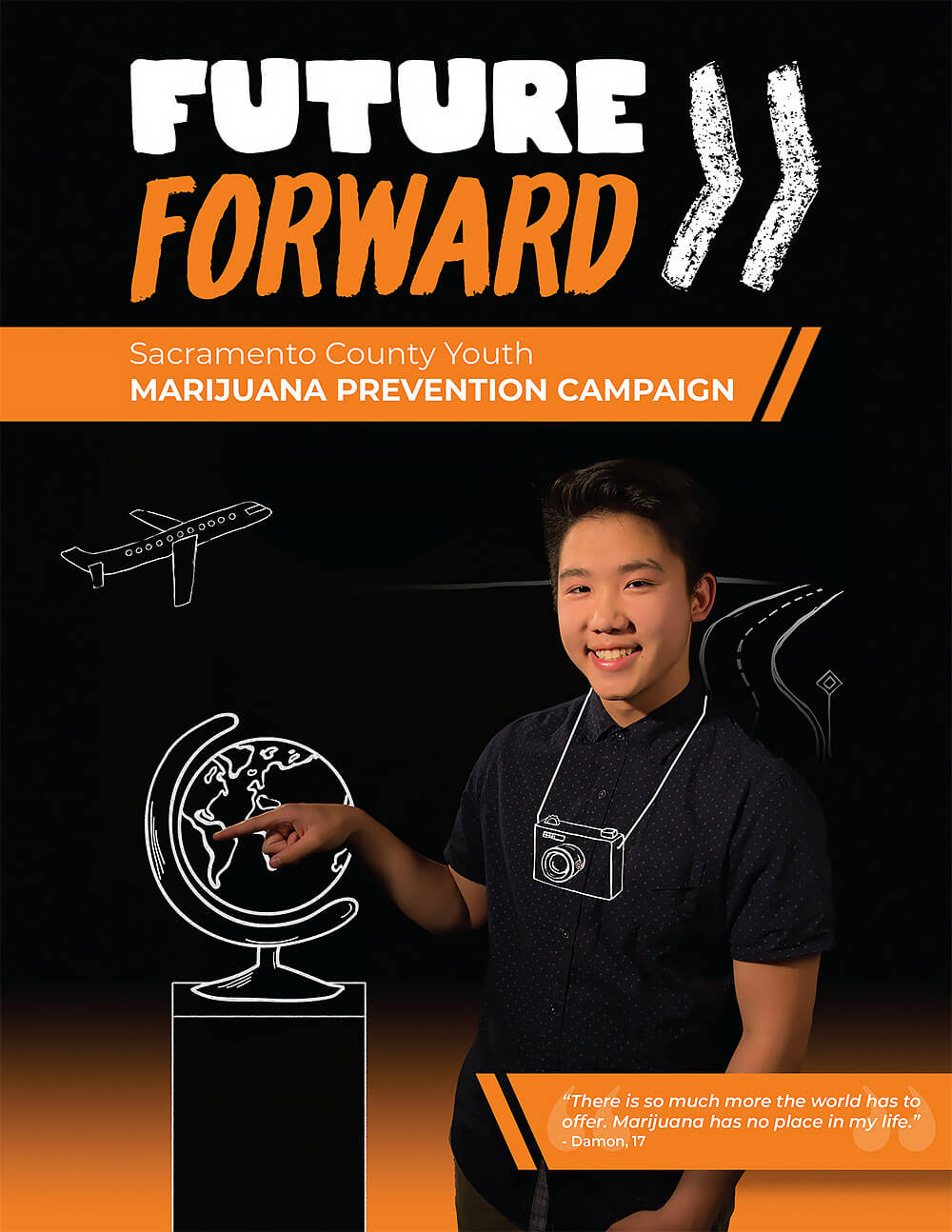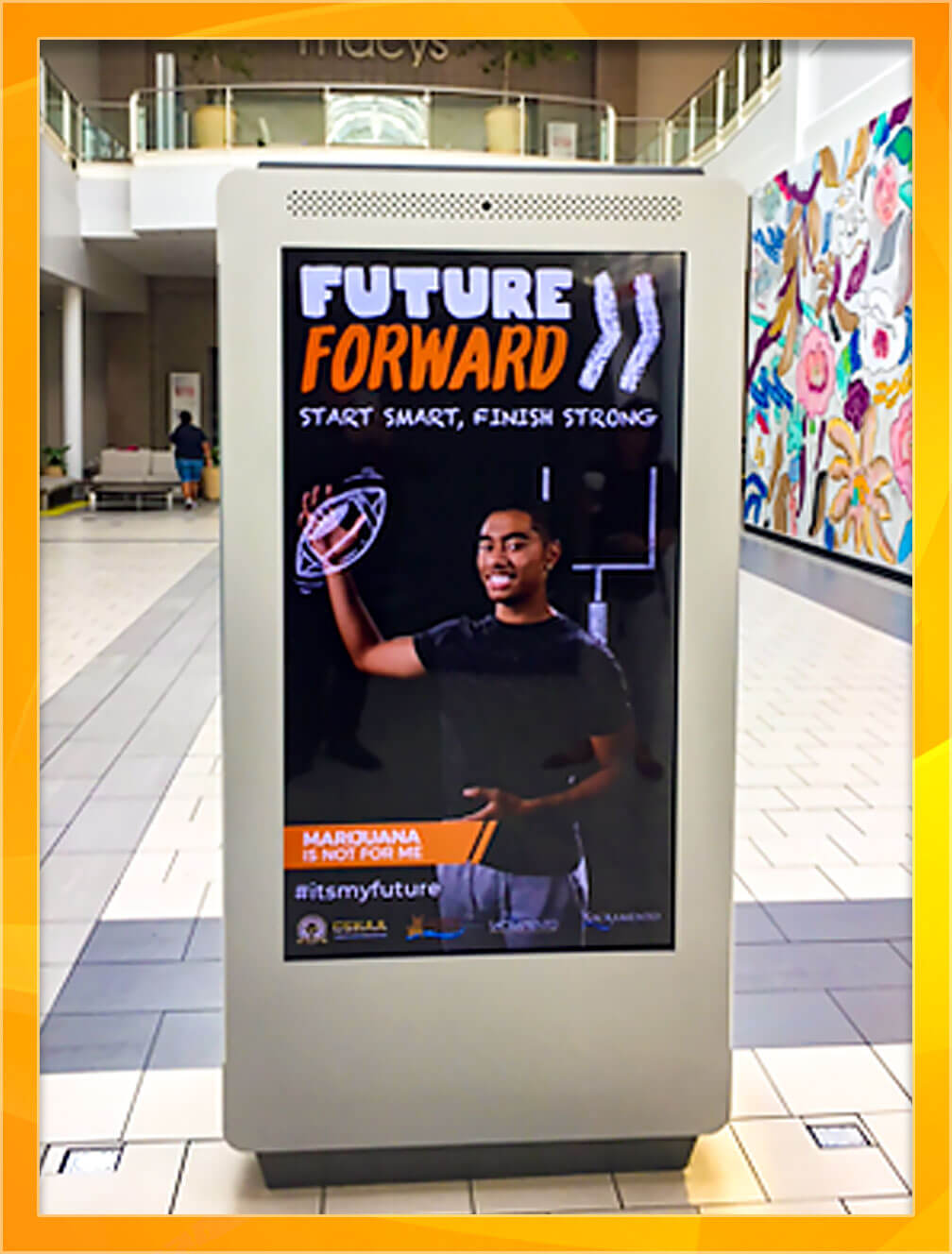Future Forward
Introduction
With the passage and implementation of Prop 64, the Adult Use of Marijuana Act, the Sacramento County Coalition for Youth received funding from Sacramento County Department of Health Services, Behavioral Health Services Division, Substance Use Prevention & Treatment Services to create and implement Future Forward, a youth marijuana prevention campaign.
Marijuana Facts:
- Teenagers are more vulnerable to addiction. Research finds that about 1 in 11 adults and 1 in 6 youth who use marijuana become dependent. And 1 in 3 develop some form of problem use. Earlier use is linked to greater risk of dependence on marijuana and other drugs.
- Kids who use marijuana regularly can decrease their IQ and impair learning, memory, math and reading levels. These changes can be permanent.
- Marijuana use while driving makes a crash twice as likely to happen.
- Today’s marijuana is more potent than it was in the 1960s and 1970s. Potency has gone from 1-2% THC to 20-30% THC in smoked form, and up to 96% THC in butane hash oil extracts and oils used in edibles.
- Parents who talk with their kids about not using marijuana have teens who are less likely to use marijuana. Parents might be surprised at how much influence their words, actions and opinions can have on their child’s choices. Speak up and get the conversation started!
- Heavy marijuana use impairs young people’s ability to concentrate and retain information. [Journal of American Academic Child & Adolescent Psychiatry.]
- Teen brains react differently to marijuana than adult brains. Because adolescence is a time of rapid brain growth, regular long-term use by teens causes long-term damage to developing brain structures.
Marijuana Edibles
Marijuana comes in many forms, not just the kind that is smoked. Edibles, waxes, and even beverages are now available. Marijuana edibles are packaged to be of interest to youth and are sold in quantities and potencies that are potentially lethal and damaging to the teen brain. Know the different ways teens might be using marijuana.
Marijuana and Driving:
- Impairs ability to estimate time and distance
- Slows reaction times
- Causes a lack of coordination and perception
- In combination with alcohol, affects driving more than either alone
- More than 3,000 Californians are killed every year due to impaired driving
- After alcohol, marijuana is the drug most often linked to impaired driving
- Vehicle Crashes are the #1 cause of death for young drivers, and substanceimpaired driving is one of the main culprits in those deaths. [O’Malley & Johnston, 2013)]
- Despite the risks associated with driving high, the number of persons testing positive for marijuana in California continues to increase. [OTS, 2012]
Consequences of Legalization — Lessons Learned from Washington & Colorado:
- In Washington, the percentage of drivers involved in fatal crashes who use marijuana more than doubled between 2013 and 2014.
- Marijuana-related ER visits increased 29% and marijuana-related hospitalizations increased 38% in Washington.
- Edibles are being marketed to kids with no information about the level of THC they contain.
- Rates of accidental ingestion by children under age 9 have increased 157% in Colorado — leading to an increase in ER visits and medical costs.
Prop 64: What Does the Law Say?
- In California, using recreational marijuana is prohibited anywhere tobacco smoking is prohibited — including schools, airplanes and most workplaces.
- Only adults 21 years and older can purchase and use marijuana recreationally.
- It is illegal to drive under the influence or with an open container of marijuana.
- It is illegal to sell marijuana outside of locally-approved and licensed dispensaries.
- Youth found in possession of marijuana will face drug education and community service requirements — and a possible suspension of their driver’s license.
Here in Sacramento County:
- Only the City of Sacramento has approved the sale of recreational marijuana through dispensaries.
- Youth still use alcohol more frequently than marijuana.
- Youth perceive marijuana as less harmful than alcohol.
- Youth use rates may change if there is more opportunity for access.
- The public and parents must have accurate information about marijuana to keep youth safe.
What Can You Do?
- Join our coalition!
- Find out about coalition meetings, happenings, and new alcohol and marijuana prevention information.
- Join us in our work to further regulate and limit youth access to alcohol and marijuana.
- Like our Facebook page and Instagram.
- If you have young people in your life, engage them in conversations.
- A Columbia University Study found the best prevention for youth substance use, violence, and negative mental health outcomes is simply having a sit-down family dinner five days a week where parents engage with their children
- Educators can download the Future Forward Teacher's Manual (14.7MB PDF) for more resources and information.
Helpful Links:



